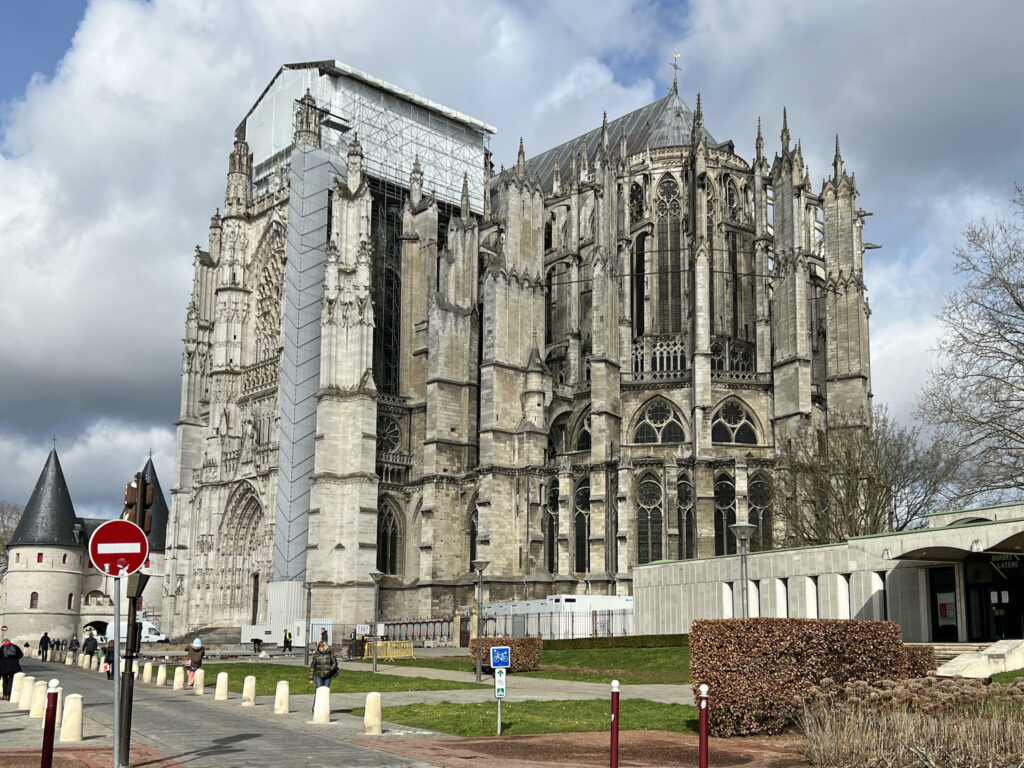
The fourth stop on our cathedral pilgrimage was more of a pause than an extended visit. Rouen was technically our next destination, but we could not pass up the chance to visit Cathédrale Saint-Pierre de Beauvais since it was on the way. Beauvais’ cathedral has the highest Gothic choir in the world (48.5 meters or 159 ft), and the city was the home of Bishop Cauchon, the diabolical persecutor of Joan of Arc. Beauvais’ history and beauty demanded a visit, and since check-in to our Airbnb in Rouen was scheduled for the late afternoon, we had plenty of time to explore.
Beauvais is less than an hour from Amiens, so we got an early start for our day of exploration. We arrived before noon, and the drive allowed us to experience the region’s small towns and country roads since there was no major highway between the cities. We still had March temperatures, but it was sunny and felt almost like spring. After being in Amiens for a week, the serenity of a smaller city was a welcome change. It was easy to find parking near the Cathedral, and the tourist office was a short walk from the car. We picked up a city map that included a self-guided walking tour which we decided to take before exploring the Cathedral.
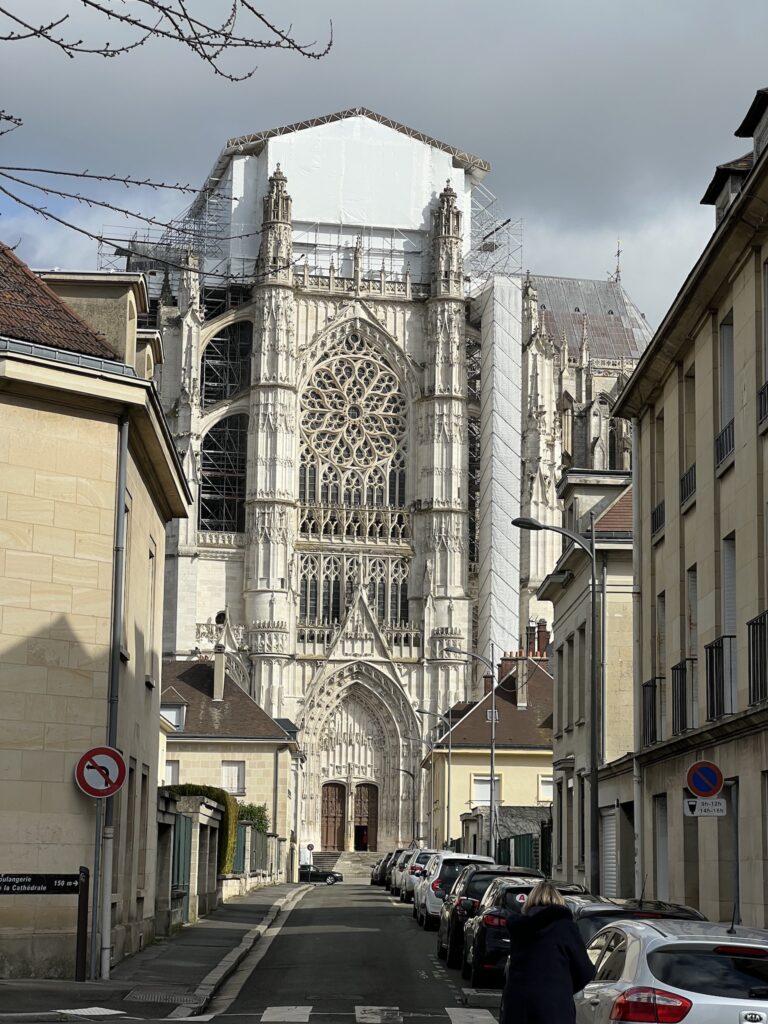
At the start of the tour, next to the Cathedral is the former Episcopal Palace of Beauvais, which also houses the Museum of the Oise Department, an art museum. It didn’t appear that the palace was open for visitors, but we could roam the grounds and visit the art museum. The evolution of the palace is nicely documented on the walls of a pavilion, and medieval tombs and architectural fragments decorate the yard. The art museum also has some lovely pieces in its collection.
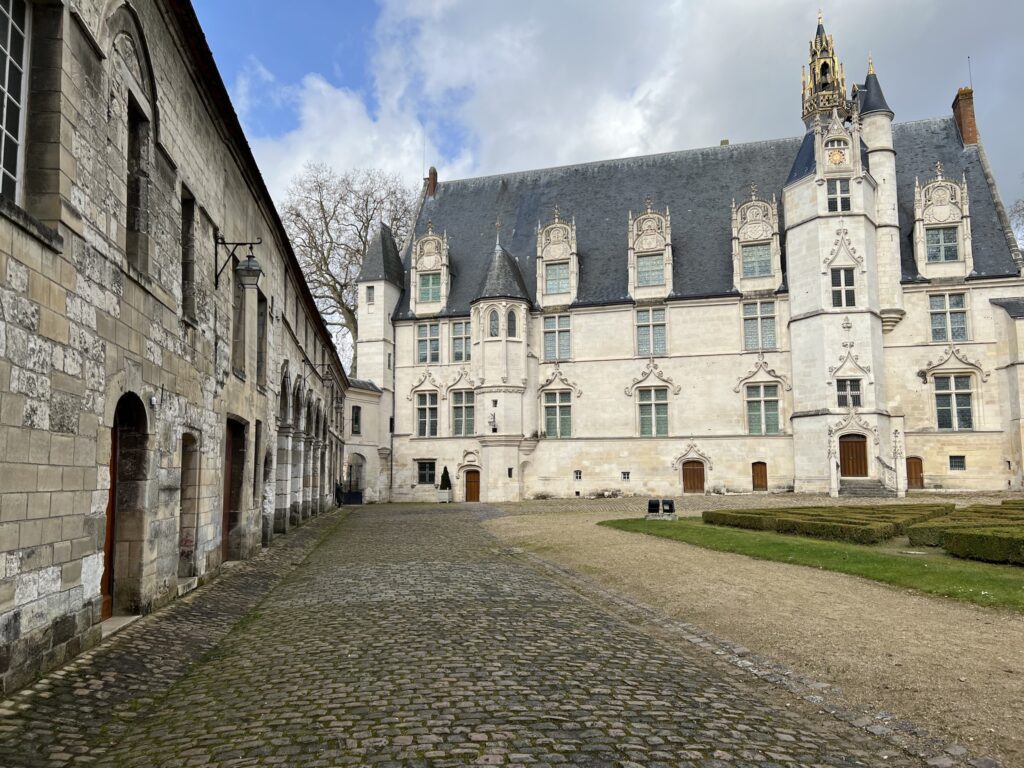
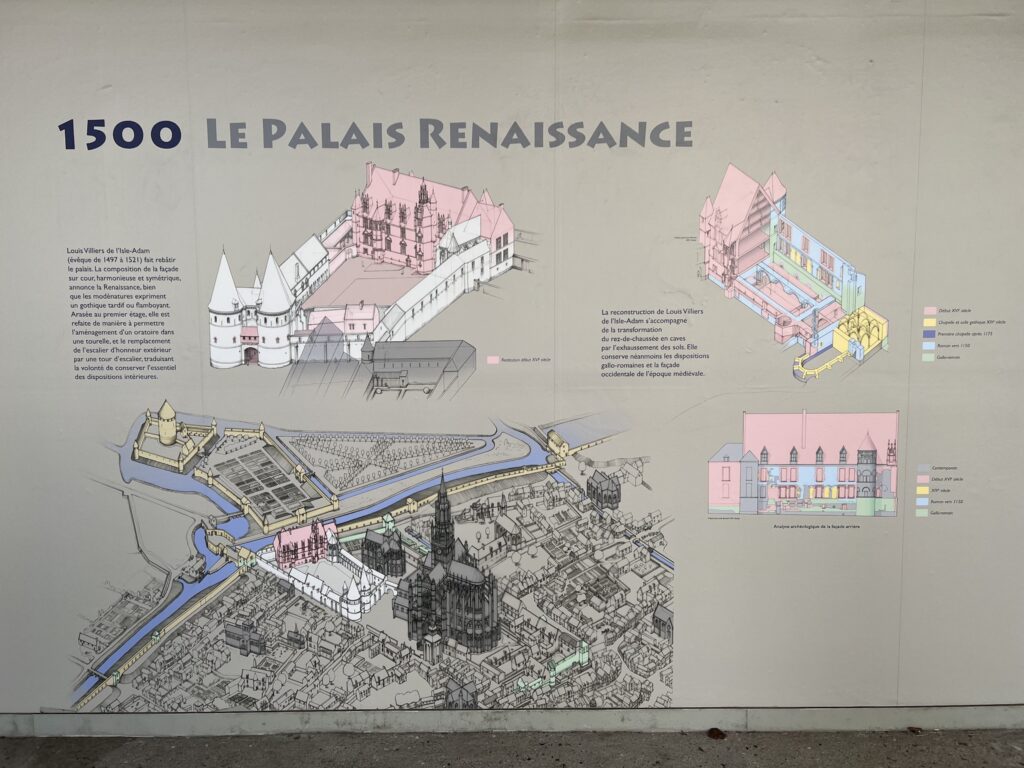
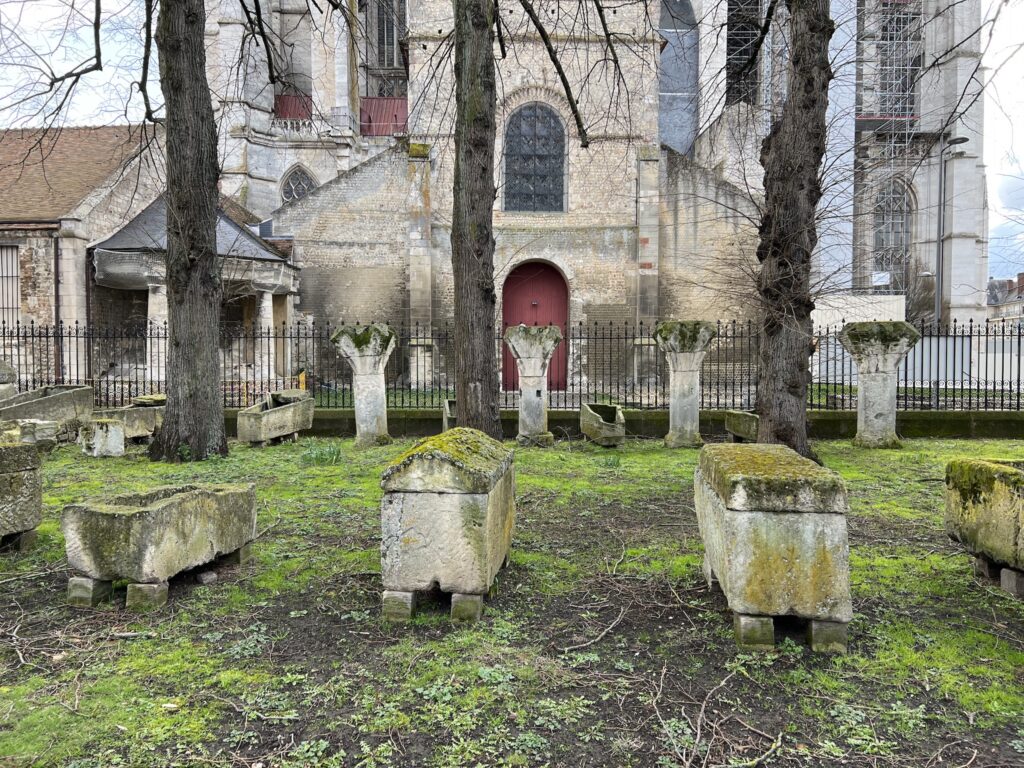

From the palace, we visited the city’s ancient ramparts and center square, stopping to get a caffeine fix at a lovely cafe, one of the few times we were brave enough to attempt ordering something at a restaurant. Let’s just say we succeeded enough to get un café et un thé. Just off the center square is the Church of Saint-Étienne, once the center of medieval town life and one of the most important parishes in the city. The church’s history goes back to the late 3rd century, but the building dates from the 12th century. Unfortunately, it was closed, but we could enjoy it from the outside.
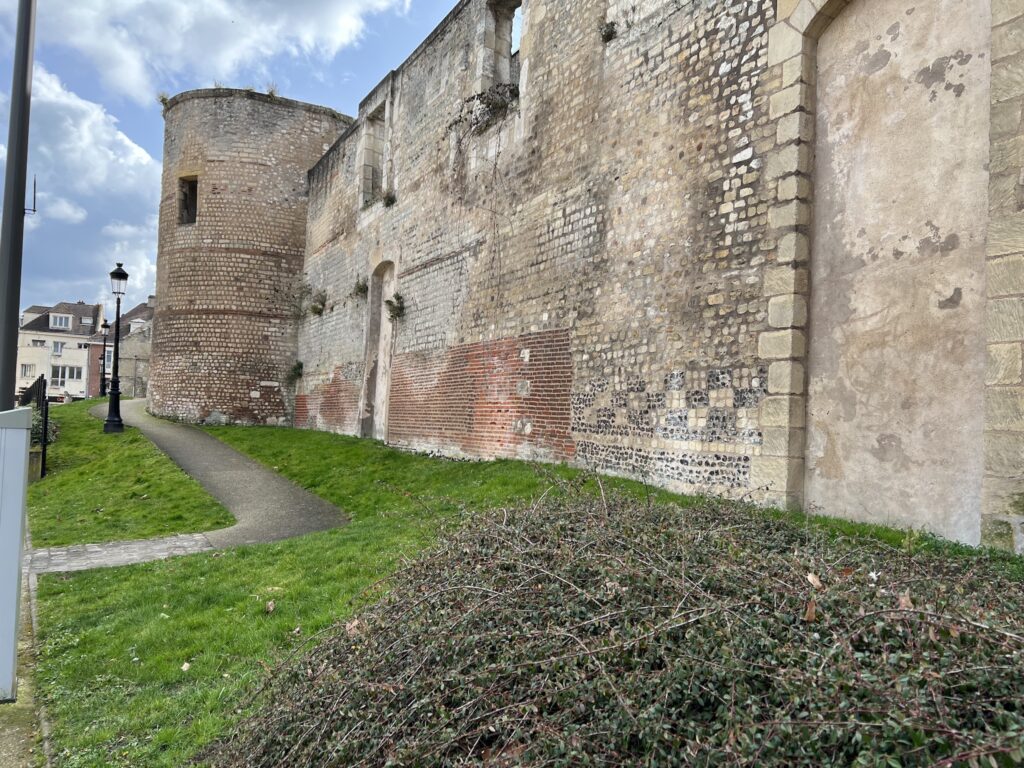
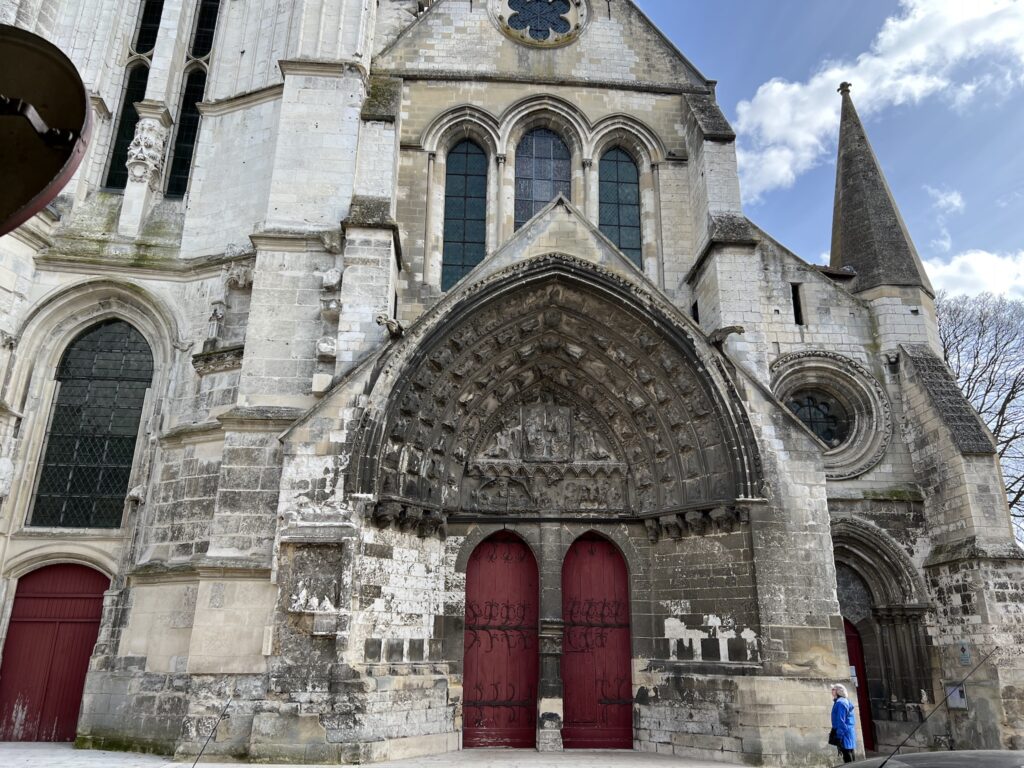
Finally, we made our way to the Cathedral. Cathédrale Saint-Pierre de Beauvais was never completed having only a choir and transept. The remains of the original cathedral, the 10th century Notre-Dame de la Basse-Oeuvre, sits where the nave would have been built. La Basse-Oeuvre is one of the rare examples in France of late Carolingian architecture still standing.

When we entered the Cathedral, we encountered an inner door that appeared to be locked. I asked a young man in front of us in French if the Cathedral was closed. He didn’t answer, so I repeated myself. He then turned and said, “Speak in English.” Obviously, he was an American and couldn’t speak French, but he lacked the tact to tell me that politely. I asked him the same question in English, but he ignored me and pushed the door open. His rudeness took me aback, but I was a little satisfied with myself that someone else had mistaken me for a French person, but I’m sure an actual French person would not have made that mistake.
Amiens Cathedral is France’s highest complete Gothic cathedral, but Beauvais Cathedral has the highest Gothic choir vaults in the world. Pushing the limits of what was possible at the time led to the collapse of the choir in 1284, just twelve years after its completion. It has since been repaired, but the structure of the Cathedral is vulnerable, as evidenced by the visible reinforcing beams.

Beauvais Cathedral is a marvel, especially its choir, labeled “the Parthenon of French Gothic” by the French architect Eugène Viollet-le-Duc.
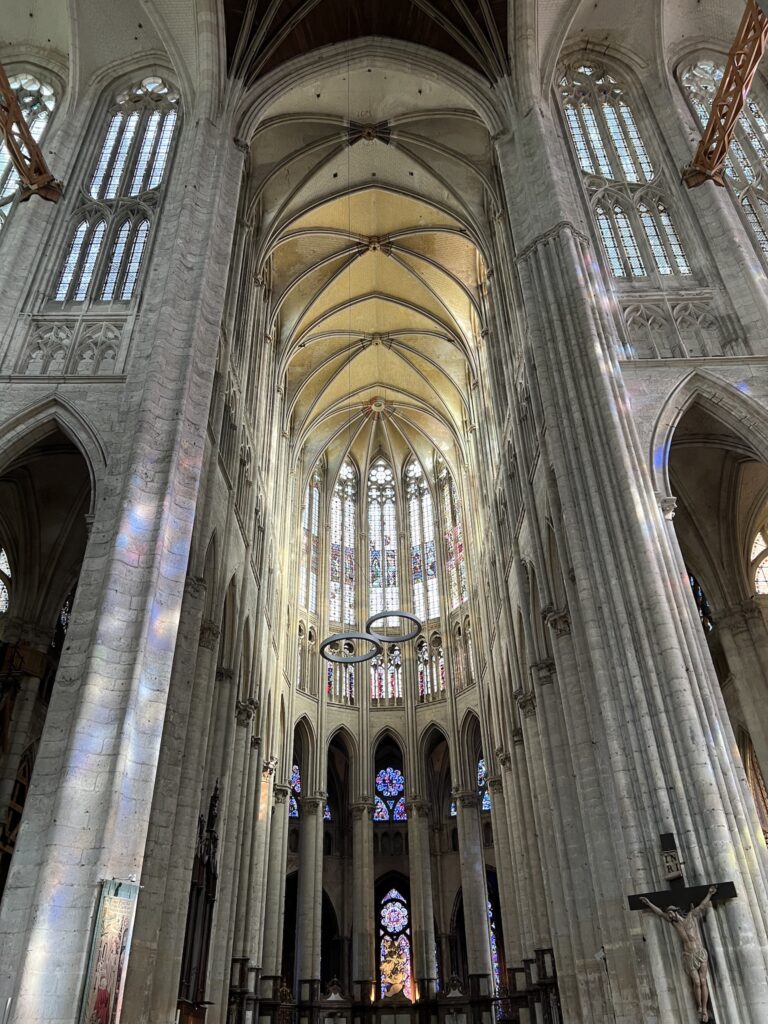
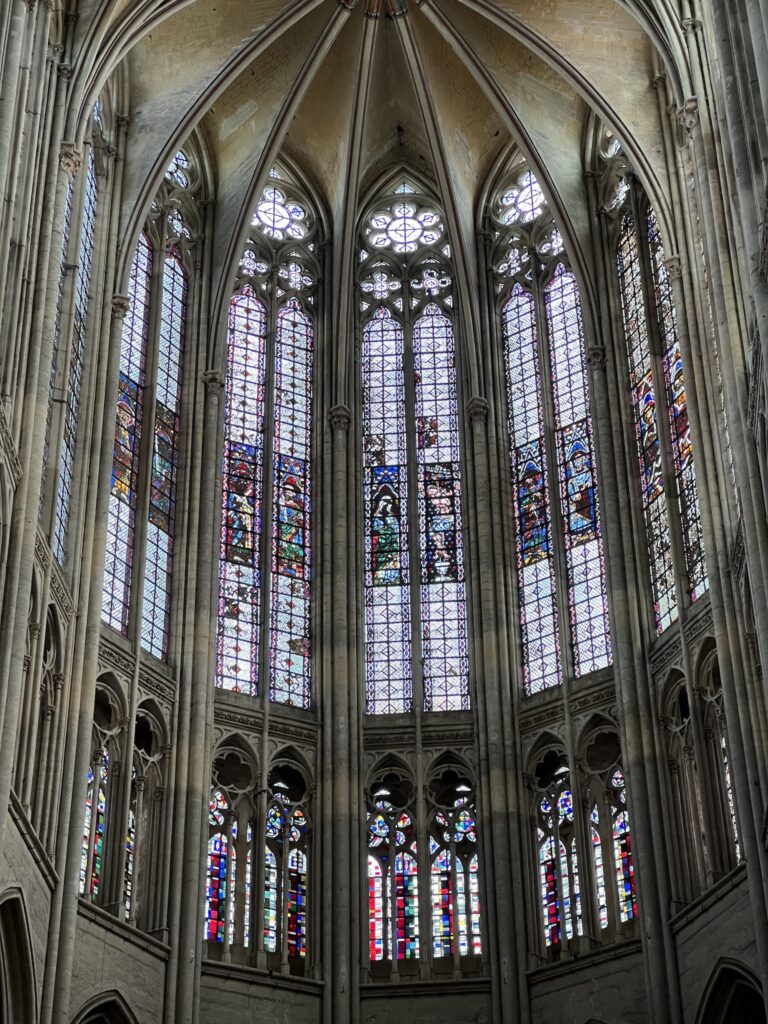
The enormous proportions of the Cathedral make it famous, but the 13th, 14th, and 16th-century stained glass is among its greatest treasures. However, most of its furniture and prized possessions disappeared during the French Revolution, but a remarkable 19th-century astronomical clock now finds its home in the Cathedral.
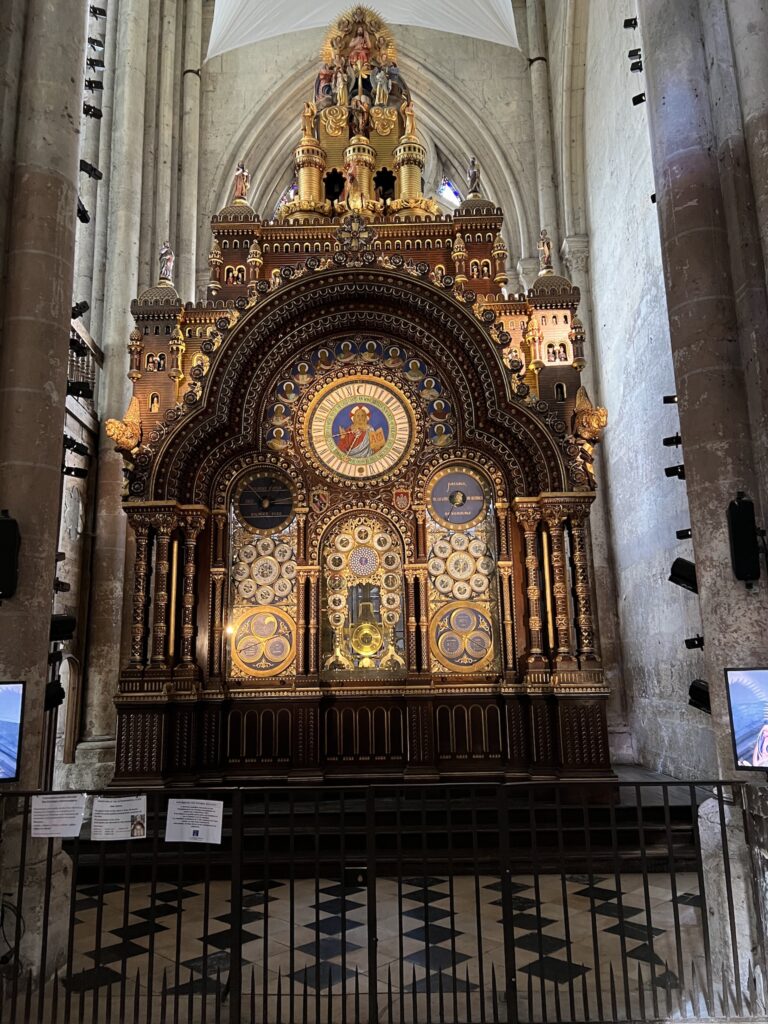
One early 20th-century statue in the Cathedral that enthralled us was “Saint Joan and the Bishop of Beauvais” by Charles Desvergnes. It depicts the contemporary Bishop of Beauvais, Eugène-Stanislas Le Senne, asking Joan to forgive the actions of his predecessor Bishop Cauchon, who relentlessly persecuted the saint during the 15th century.
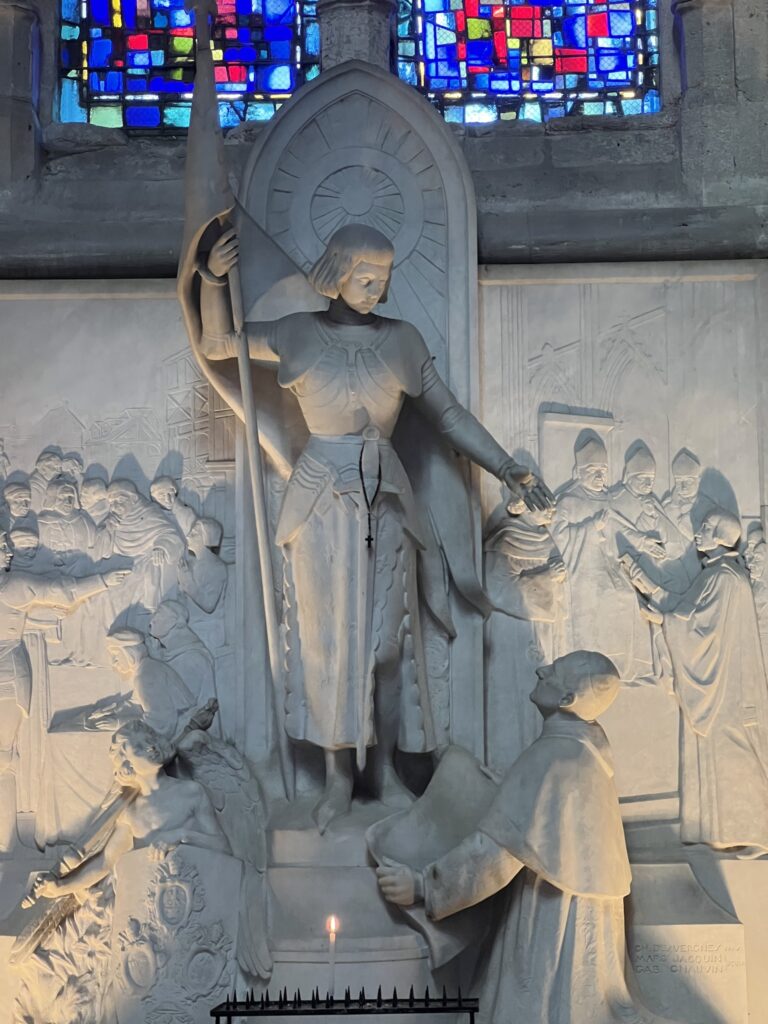
We thoroughly enjoyed our short visit to Beauvais, with its magnificent Cathedral and historical delights. Like all of our other stops, one could immerse themselves in this lovely city’s beauty, history, and ambiance for quite some time without exhausting its charm.
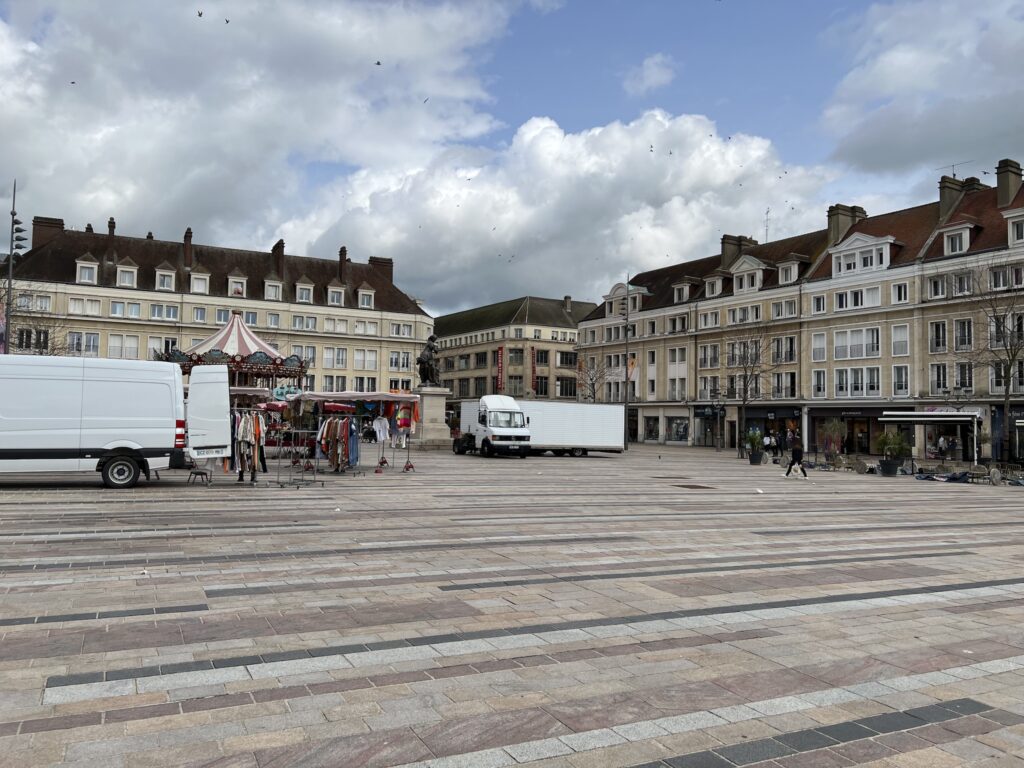
Index of blog posts for our Cathedral Pilgrimage
- 1. A Cathedral Pilgrimage
- 2. Preparing for a Pilgrimage
- 3. First Stop – Reims
- 4. Reims – City of Kings
- 5. Saint Remi and His Basilica
- 6. Christian Time Traveling
- 7. Second Stop – Laon
- 8. Cathédrale Notre-Dame de Laon
- 9. Third Stop – Amiens
- 10. Amiens Cathedral: Almost Heaven
- 11. Soaring Vaults and Great Treasures
- 12. Enchanted Chanting
- 13. Amiens: A City of History, Art, and Culture
- 14. Fourth Stop – Beauvais
- 15. Fifth Stop – Rouen
- 16. Cathédrale Notre-Dame de Rouen
- 17. 3:10 to Gothic
- 18. Joan’s Triumph
- 19. Rouen Treasures
- 20. Cathédrale Notre-Dame de Chartres
- 21. Chartres Cathedral: A Pilgrimage Through Time and Light
- 22. Chartres’s Facade: Functional Beauty